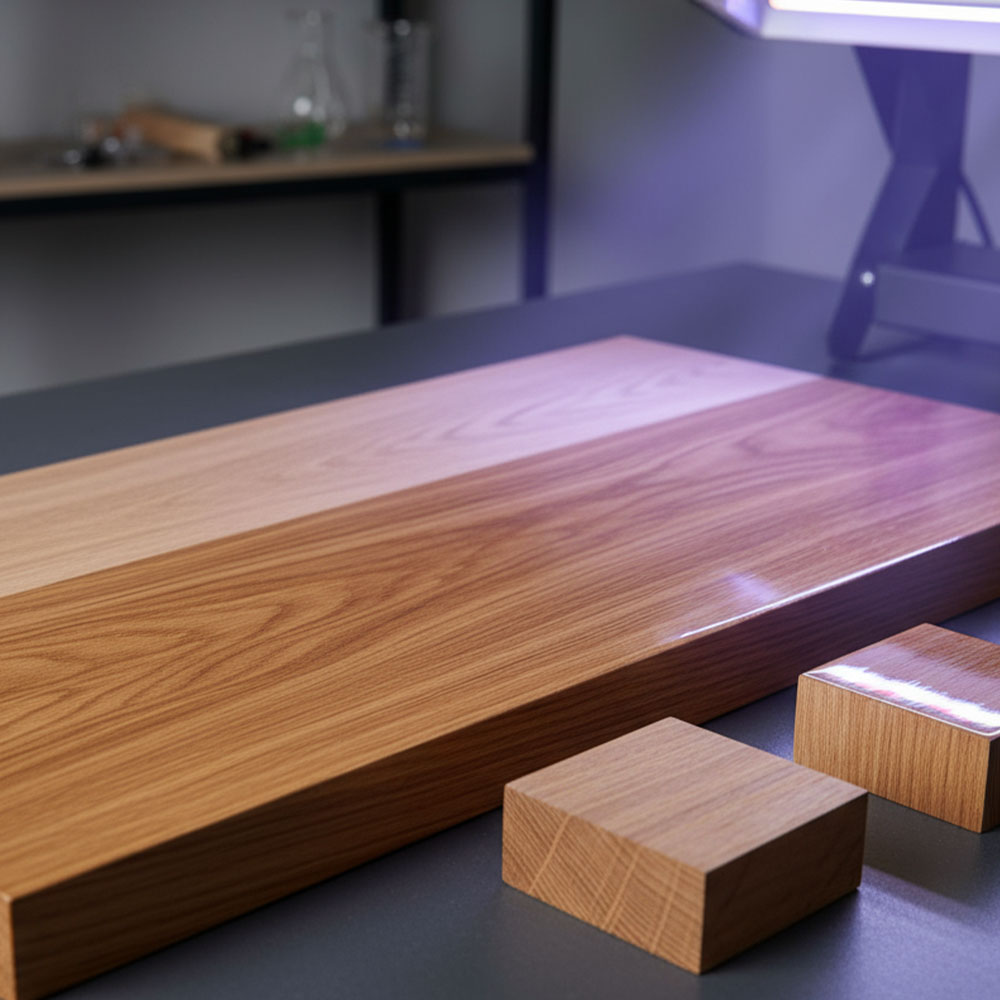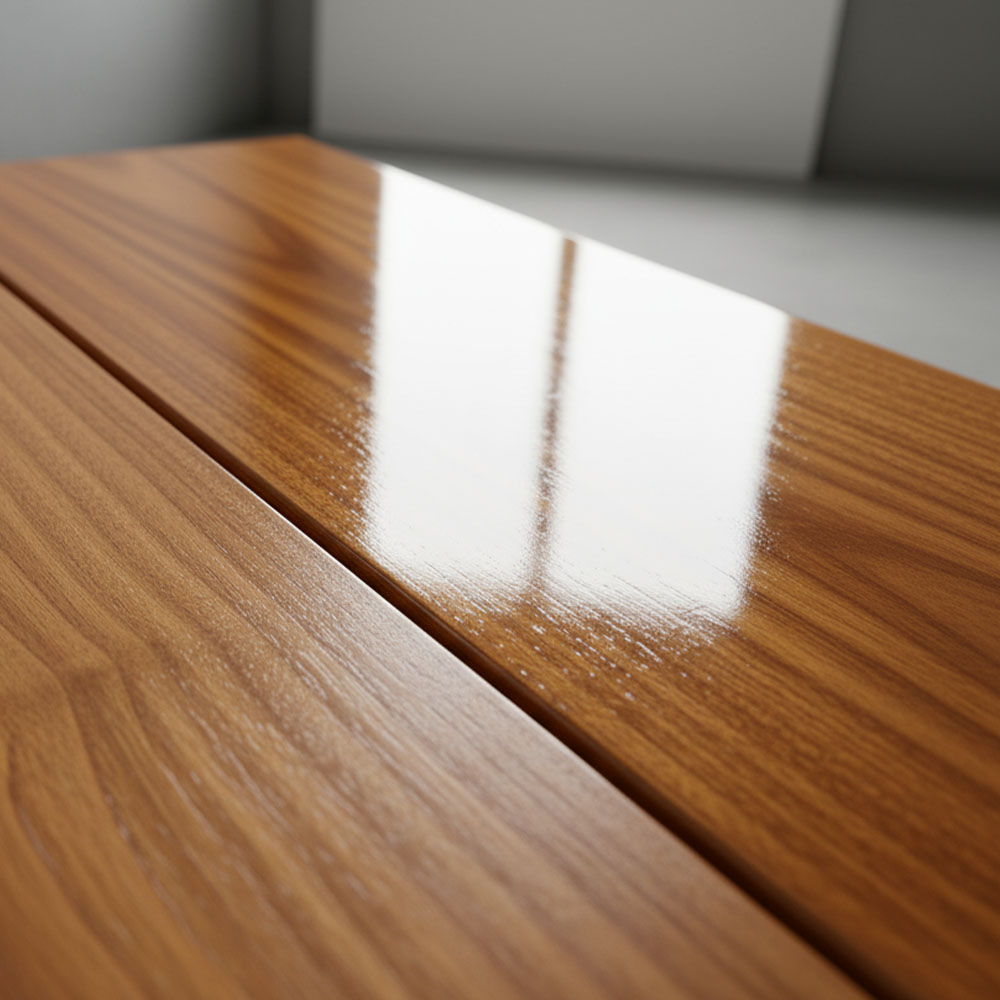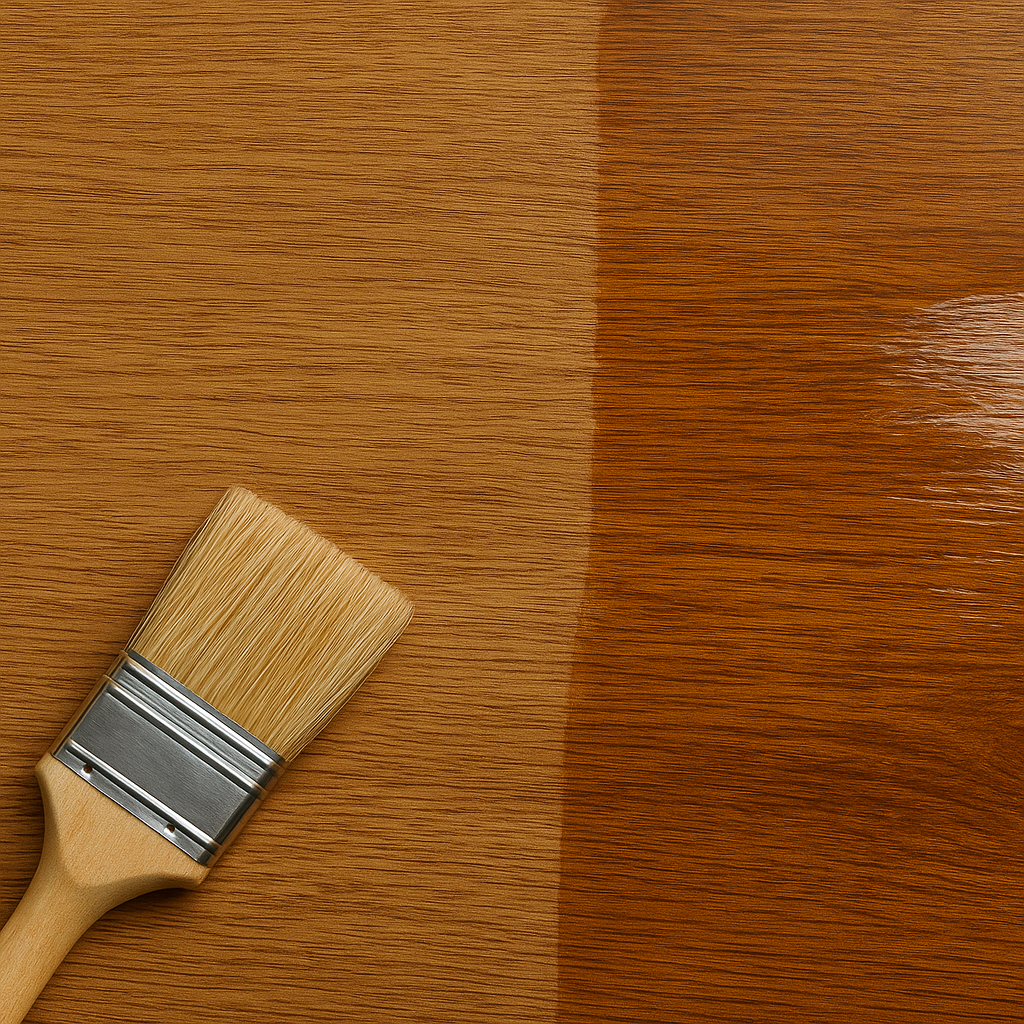How Our UV Finish Improves Your Indoor Air Quality
Have you ever wondered about that strange smell from your new wood floor or furniture? Perhaps, like me, you’ve felt light-headed after spending time in a building where that same odor lingered.
It turns out that the suspicion you’ve had in the back of your mind—”This can’t be good for me!”—was spot on.
Volatile Organic Compounds: A Hidden Health Risk
What you’re smelling is likely a combination of volatile organic compounds (VOCs). These are toxic chemicals that evaporate as your wood finish transitions from liquid to solid, releasing harmful vapors into the air.
Breathing in these vapors can seriously compromise human health. This issue has gained increased attention in recent years, with the hardwood flooring and furniture industries working to eliminate VOCs and make non-toxic finishes the standard.
Interestingly, non-toxic wood finishes that emit zero VOCs have been available since the mid-1970s. These finishes cure instantly when exposed to harmless UV light, making them a safer, more eco-friendly choice. At DCI, we’ve been using UV-cured finishes for over a decade. However, many companies still rely on materials that off-gas toxic VOCs, potentially compromising indoor air quality.
Why You Don’t Want VOCs in Your Furniture
If you’re purchasing furniture for residence halls, it’s important to understand the impact VOCs can have. The choice of non-toxic wood finishes directly affects the health of your students and the overall quality of the furniture.
Historically, most wood finishes contained VOCs. According to the Green Home Guide, VOCs are carbon-containing substances that easily turn into vapors or gases. They are commonly found in paints, coatings, and cleaning products.
For years, the federal government has pushed furniture manufacturers to eliminate VOCs from their production processes. Despite this, many still use finishes that emit harmful chemicals into indoor environments.
VOCs and Indoor Air Quality
VOCs are particularly concerning because they can significantly affect indoor air quality. In fact, VOC concentrations are often 1000 times higher indoors than outdoors. The EPA lists several health risks associated with VOC exposure, including:
- Eye, nose, and throat irritation
- Headaches, nausea, and dizziness
- Damage to the liver, kidney, and central nervous system
- Some VOCs are even linked to cancer in both animals and humans.
These toxic chemicals pose a significant health risk, especially in spaces like student housing, where people spend long hours indoors. The need for VOC-free, non-toxic finishes is more pressing than ever.
The Startling Effects of VOCs on Student Cognition
A study by the Harvard School for Public Health analyzed the effects of VOCs and indoor air quality on student cognition. Researchers exposed participants to high concentrations of VOCs—similar to those emitted from common office furniture—and found that cognitive performance in green environments (free of VOCs) was 61% higher than in traditional environments.
Students exposed to standard furniture with typical VOC levels scored significantly lower—nearly 50% lower—on cognitive tests compared to those in VOC-free environments. This stark contrast highlights how important it is to minimize VOC exposure in student housing.
The Benefits of UV Finish
Why UV-Cured Finishes Are the Solution
One of the main reasons DCI uses UV-cured finishes is their ability to eliminate VOCs altogether. Unlike solvent-based finishes like nitrocellulose lacquer, UV-cured finishes are non-toxic, odorless, and environmentally friendly.
How does it work? According to Wikipedia, UV finishes are created with photoinitiators and resins that harden when exposed to ultraviolet light, completing the curing process within seconds. This ensures zero VOC emissions, making UV finishes safer for both the environment and the people who interact with the finished product.
In fact, our UV-cured finish is a major reason our furniture earned the MAS Greencertification, one of the most stringent third-party certifications for furniture with high indoor air quality ratings.
Comparing UV-Cured Finish to Other Wood Finishes
Traditional Finishes:
- Nitrocellulose Lacquer: Contains 75% chemicals added to the resin. These chemicals are released as VOCs during the drying process, contributing to indoor air pollution.
- UV-Cured Finish: 100% solids, meaning no harmful chemicals are released. The finish stays on the furniture, and UV light hardens it instantly.
The differences are stark. The UV finish not only protects the environment, but also ensures that your furniture is free from harmful VOCs, improving the health of everyone who comes into contact with it.
How UV-Cured Non-Toxic Wood Finish Improves Your Budget and Your Furniture
Aside from health benefits, using UV-cured finishes offers several financial advantages.
- Reusable Coating: Unlike other finishes, excess coating or overspray from UV finishes can be collected and reused, reducing material waste.
- Faster Drying: UV finishes dry instantly, which cuts down on labor time and costs. This allows us to pass on the savings to you, our customers.
- Increased Durability: UV-cured wood is twice as hard as pre-finished wood floors and other finishes, providing superior resistance to scratches, scuffs, and stains.
Reducing Carbon Pollution with UV Finish
Using UV finishes also helps reduce carbon pollution in several ways:
- Roll-Applied Process: This process offers 100% transfer efficiency, which is much more efficient than spray-applied finishes (which only have 85% efficiency).
- Reduced Shipping Carbon Footprint: By finishing wood panels before assembly, we can ship components to assembly plants in North Carolina and California. This reduces our carbon footprint by about one-third compared to shipping pre-assembled furniture.
Don’t Risk It: Choose Non-Toxic, VOC-Free Finishes
In conclusion, there’s no reason to expose your students to VOC-laden furniture that can off-gas toxic chemicals for months. With UV-cured, non-toxic wood finishes, you can protect both health and the environment.
If you want to learn more about our VOC-free finishes and how they benefit your furniture and budget, feel free to reach out to me at sales02@diyresins.com
Meta Description
Improve indoor air quality and reduce VOC exposure with UV-cured wood finishes. Learn how this non-toxic, eco-friendly solution benefits your furniture and health.


